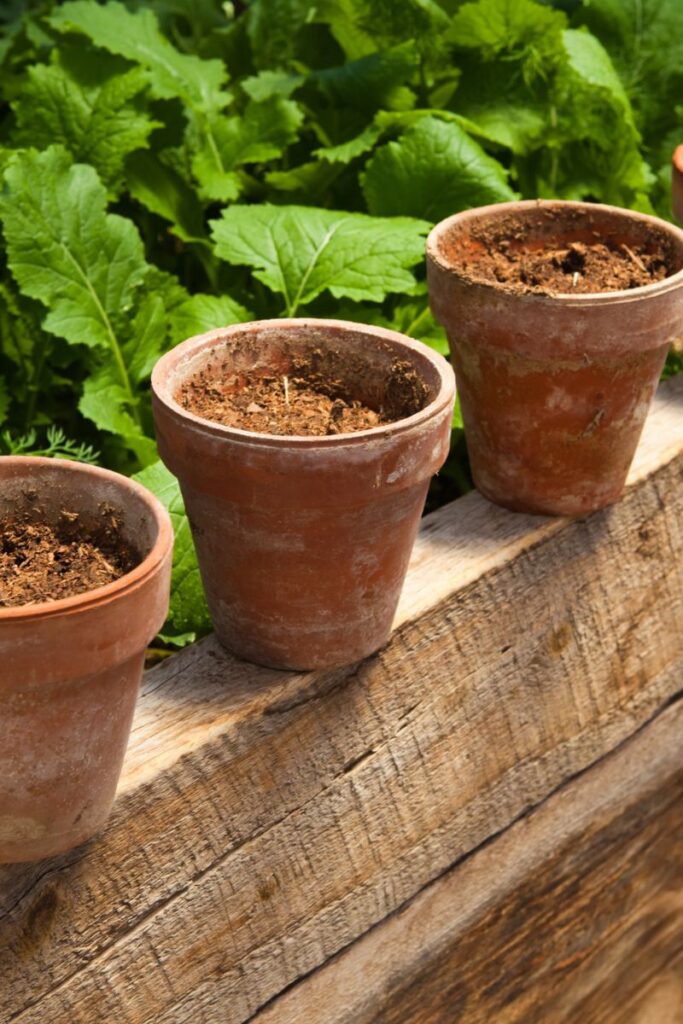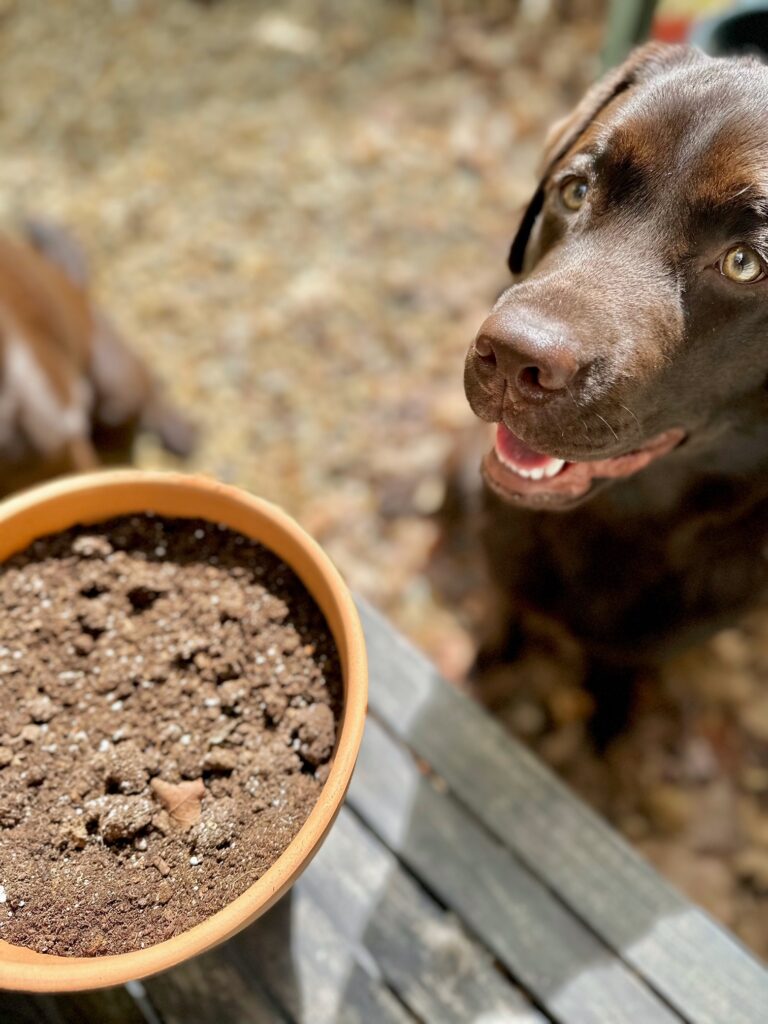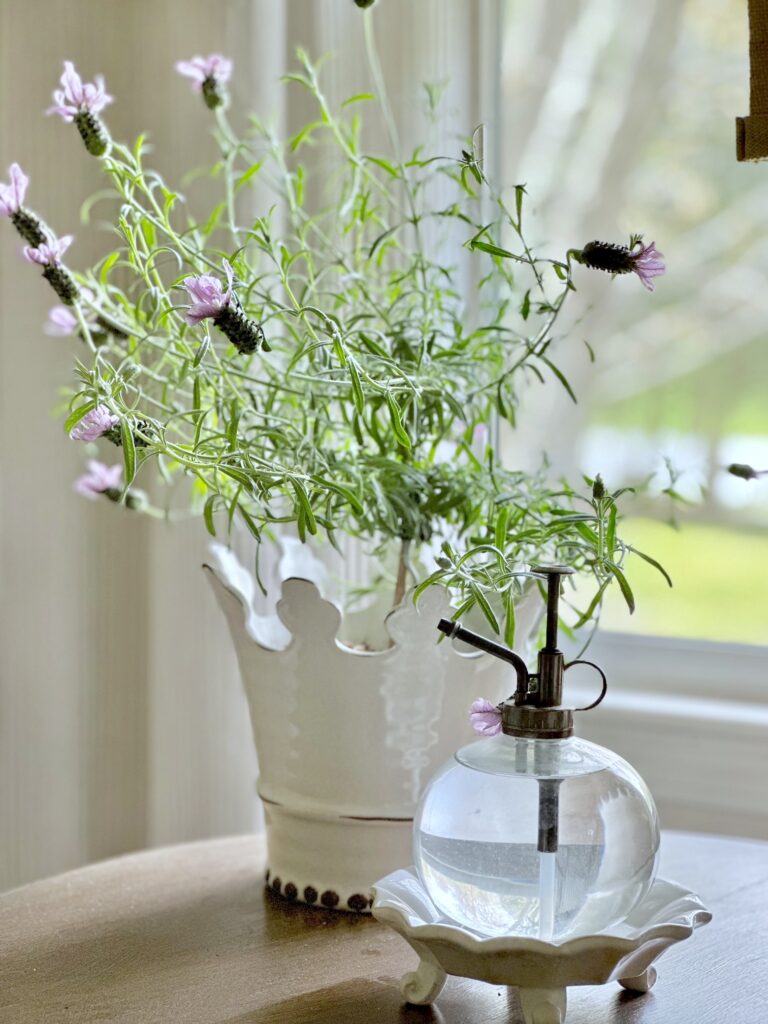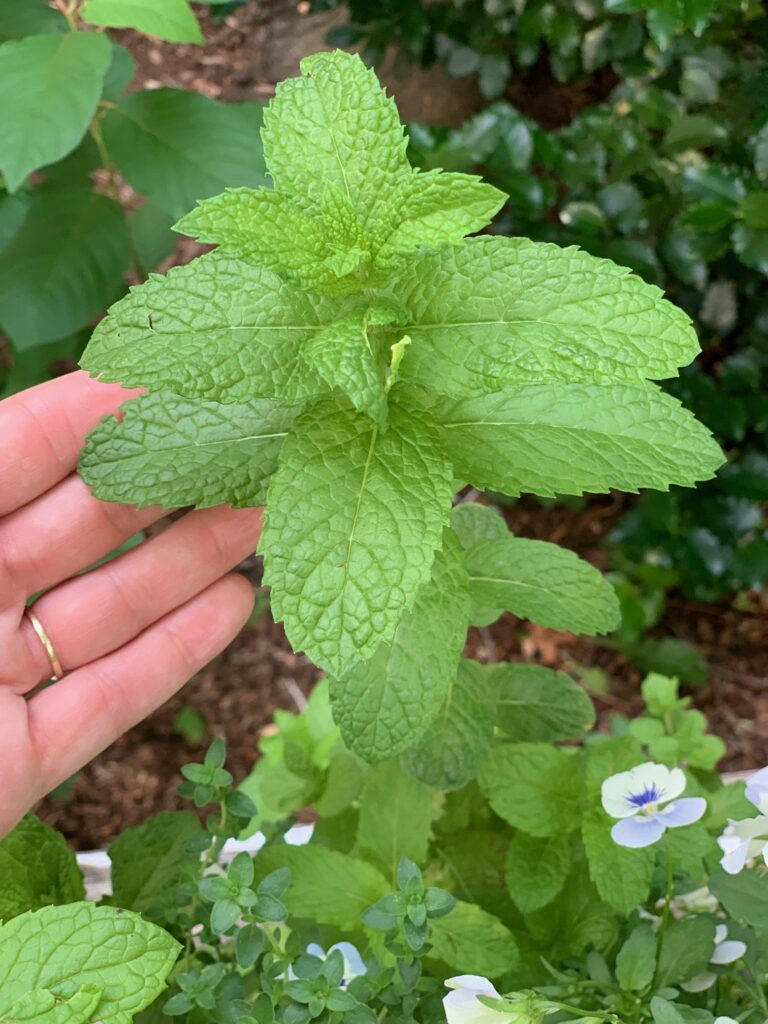The Best Soil for Lavender: Tips for Creating the Perfect Mix
Hey there plant parents! Are you thinking about adding some lavender to your indoor plant collection? Well, before you go wild with your green thumb, let’s talk about the importance of good soil for your little purple friends. Indoor lavender plants are like divas, they have some serious soil preferences. They like their soil to be well-draining with good air circulation, and they can throw a major fit if the soil is too wet. You don’t want to deal with a lavender diva meltdown, trust me. To ensure healthy growth and a bountiful harvest of lavender flowers, it’s essential to provide your plants with the right soil mix. In this post, The Best Soil for Lavender: Tips for Creating the Perfect Mix we’ll explore the best soil for lavender and share a homemade mix that will help your plants thrive (and not have a diva meltdown!)

Content may contain affiliate links. When you shop the links, we receive a small commission at no cost to you. Thanks for supporting my small business.
The Importance of Good Soil for Lavender Plants
Lavender plants prefer well-draining soil with good air circulation, and they can be prone to root rot if the soil is too wet. The surrounding soil should also be taken into account since lavender prefers alkaline soil with a pH level between 6.5 and 8.0. Lavender also prefers full sun and sandy or gravelly soil, which can help drainage.

Breaking Down Alkaline vs Acidic Soil pH Levels
Alkaline soil and acidic soil refer to the pH level of soil, which is a measure of how acidic or basic the soil is. The pH scale ranges from 0 to 14, with 7 being neutral. A pH level below 7 indicates acidic soil, while a pH level above 7 indicates alkaline soil.
Acidic soil typically has a pH level ranging from 0 to 6.9, and is characterized by a high concentration of hydrogen ions. This type of soil is often found in areas with high rainfall or where there has been a lot of organic matter decomposition.
Alkaline soil, on the other hand, has a pH level ranging from 7.1 to 14 and is characterized by a low concentration of hydrogen ions. This type of soil is often found in areas with dry climates, as well as in areas with high levels of limestone or other alkaline rocks.
Understanding the pH level of your soil is important for successful gardening, as different plants thrive in different pH levels. Some plants, like lavender and rosemary, prefer alkaline soil, while others, like blueberries and azaleas, prefer acidic soil. By testing your soil and amending it as needed, you can create an optimal growing environment for your plants.

The Importance of Avoiding Poor Soil for Plant Growth
When it comes to growing lavender plants, having good soil is essential. Poor soil can be a major obstacle to successful lavender cultivation, as these plants require well-draining soil that is not too acidic or too alkaline.
Poor soil can lead to problems such as root rot, stunted growth, and low-quality flowers. It can also make it more difficult for lavender plants to absorb nutrients from the soil, which can negatively impact their health and vitality.

Homemade Lavender Soil Mix
An excellent choice for growing lavender is a potting soil mix that includes organic matter, coarse sand, peat moss, earthworm castings, and coconut coir. Add some coarse sand or succulent soil to the mix for good drainage. For raised beds, mix garden soil with sand and gravel. You can also add bone meal to the mix to provide essential nutrients.
Steps to making homemade lavender soil mix:
- Gather your ingredients: You will need potting soil, perlite, sand, and compost. These materials can be purchased at a garden center or home improvement store.
- Mix the ingredients: Combine three parts potting soil, two parts perlite, one part sand, and one part compost in a large container. Use a trowel or gloved hands to mix the ingredients thoroughly.
- Check the moisture level: The soil mix should be moist but not waterlogged. If it feels too dry, add a small amount of water and mix again.
- Add nutrients: Lavender plants require well-draining soil that is rich in nutrients. You can add a slow-release fertilizer or organic amendments like bone meal or fish emulsion to the soil mix to provide essential nutrients.
- Fill containers: Fill your planting containers with the soil mix, leaving a small gap between the soil and the top of the container.
- Plant your lavender: Plant your lavender seedlings or cuttings in the soil mix, making sure to cover the roots completely. Gently firm the soil around the base of the plant.
- Water your lavender: Water your newly planted lavender thoroughly and keep the soil consistently moist but not waterlogged. Be sure to provide good drainage to prevent the soil from becoming too wet.
By following these steps, you can create a high-quality soil mix that provides the perfect growing environment for your lavender plants.

Test the Soil pH
To ensure the healthy growth of lavender, it’s important to test the soil’s pH level beforehand. The ideal pH range for lavender is between 6.5 to 8.0. If the soil is too acidic, you can add lime to increase the pH level. Conversely, if the soil is too alkaline, sulfur can be added to lower the pH level. By amending the soil with these materials, you can create a more favorable growing environment for your plants. Understanding the pH levels of your soil is key to creating an optimal growing environment for the plants you want to cultivate in your garden.

Consider Soil Amendments
Incorporating organic materials, such as those mentioned below, into the soil can enhance soil structure and furnish vital nutrients for robust plant growth. Nonetheless, it is essential to avoid excessive fertilization, as it can result in overgrowth and inferior quality of lavender flowers.
Home Waste and Products for Increasing the PH Level in the Soil
I’m all about using home waste as fertilizer and there are several that can be used to make the soil more alkaline. Here are some examples:
- Fireplace Ashes: The ash leftover from burning wood in a fireplace or wood stove can be used to make soil more alkaline. Wood ash is rich in calcium carbonate, which can help to raise the pH level of acidic soil.
- Banana Peels: Banana peels are a natural source of potassium, which can help to raise the pH level of soil. To use banana peels as a soil amendment, chop them into small pieces and mix them into the soil.
- Seashells: Crushed seashells are a natural source of calcium carbonate, which can help to raise the pH level of acidic soil. Seashells can be ground up and added to the soil to improve soil structure and pH level.
- Baking Soda: Baking soda can be used to make soil more alkaline, but it should be used with caution as it can also raise the soil’s sodium content. To use baking soda as a soil amendment, mix a small amount into the soil and monitor the pH level closely.
- Crushed Eggshells: Eggshells are rich in calcium carbonate, which can help to raise the pH level of acidic soil. Crushed eggshells can be added to the soil to provide a slow-release source of calcium.

It’s important to note that using home waste as a soil amendment can be beneficial, but it’s also important to test the soil’s pH level regularly to ensure that the pH level is not raised too high.
Choose the Right Pot or Container
Lavender plants grow best in terracotta pots or containers that allow for good air circulation and drainage. Make sure the container has drainage holes at the bottom, and use gravel or rocks at the base of the pot to prevent excess water from accumulating. For best results, transplant new plants into fresh soil with a healthy mix of essential nutrients.

Provide the Right Growing Conditions
In addition to providing the right soil mix, make sure your lavender plants have access to full sun, good air circulation, and consistent moisture. Water your plants when the top inch of soil is dry, and avoid watering the leaves or stems. During the early spring or late summer, prune the lower leaves and stems to promote new growth. Learn more about the optimal growing conditions for lavender in my How Often to Water Lavender Indoors: A Comprehensive Guide post.

Frequently Asked Questions
While it is possible to use a regular potting mix for lavender, it is not the ideal option. Lavender plants require well-draining soil that is not too rich in nutrients. Regular potting mix can often retain too much moisture, leading to root rot, and may contain too much fertilizer, causing excessive growth and poor-quality flowers.
To create the ideal growing environment for lavender, it is recommended to use a soil mix specifically formulated for this plant. A good lavender soil mix should be well-draining and contain a mixture of potting soil, perlite, sand, and compost. This mix will provide the necessary drainage and nutrients for healthy lavender growth.
If you cannot find a lavender-specific soil mix, you can create your own by following a recipe like the one mentioned in the previous answer. This will ensure that your lavender plants have the best possible soil to grow in and will help them to thrive.
Good drainage is crucial for the health and success of lavender plants. Here are some tips to ensure good drainage:
Use well-draining soil: Use a soil mix that is specifically formulated for lavender, or make your own by adding materials like perlite, sand, and compost to potting soil.
Use a container with drainage holes: Make sure your container has drainage holes to allow excess water to escape. If your container does not have holes, drill some in the bottom.
Add drainage material: Place a layer of gravel, stones, or broken pottery at the bottom of your container before adding soil. This will provide extra drainage and help prevent soil from clogging the drainage holes.
Water properly: Water your lavender deeply and thoroughly but allow the soil to dry out between waterings. Do not let your container sit in standing water as this can lead to root rot.
Elevate your container: Elevating your container can help improve drainage by allowing excess water to flow freely from the drainage holes.
By following these tips, you can ensure that your lavender plant has the best possible drainage, which will promote healthy growth and help prevent problems like root rot.
Lavender plants prefer well-draining soil that is consistently moist but not waterlogged. Water deeply and thoroughly but allow the soil to dry out between waterings. In general, lavender plants should be watered once or twice a week. For more information on watering your lavender plants visit my How Often to Water Lavender Indoors: A Comprehensive Guide post.
Lavender plants like to be watered deeply and thoroughly, but it’s important to avoid getting the foliage wet, as this can promote the growth of fungal diseases. Instead, water the soil around the plant, aiming to keep the roots moist.
When watering, make sure the water runs through the soil and does not sit in water. Lavender plants prefer well-draining soil, so it’s essential to avoid overwatering and ensure the soil has good drainage. If the soil remains waterlogged for too long, it can lead to root rot and other problems.
To avoid overwatering, allow the soil to dry out slightly between waterings. In general, lavender plants should be watered once or twice a week, depending on the weather conditions and the moisture content of the soil. Additionally, for outdoor growing lavender, it’s a good practice to water early in the morning to allow the foliage to dry before the heat of the day.

Creating the right soil mix is crucial for healthy lavender plants. With the tips provided in this post, you can ensure that your lavender plants have the proper soil drainage, essential nutrients, and good air circulation they need to thrive. For more planting tips and advice, sign up for our newsletter with your email address, or visit your local nursery or garden center, one of my favorite field trips!
If you love lavender as much as I do visit these “lavender-centric” posts:
How Often to Water Lavender Indoors: A Comprehensive Guide: This comprehensive guide titled “How Often to Water Lavender Indoors” will equip you with expert tips on growing lavender indoors, covering aspects such as watering, soil, lighting, temperature, and addressing common problems.

DIY Lavender Closet Sachets:This tutorial demonstrates how to create lavender sachets for your closets. It outlines the necessary supplies and tools and offers a detailed, step-by-step guide. The post also delves into the history of sachets, suggests various uses for lavender sachets, and includes instructions for drying fresh lavender, for those interested in using their own supply.
Thank you for visiting the blog today for The Best Soil for Lavender: Tips for Creating the Perfect Mix! Please be sure to visit my 12 Best Herb Garden Plants: Expert Insights for Caring and Harvesting the Finest Plants where I chat more about lavender and 11 other rockstar herb plants!
Keep creating friends!








